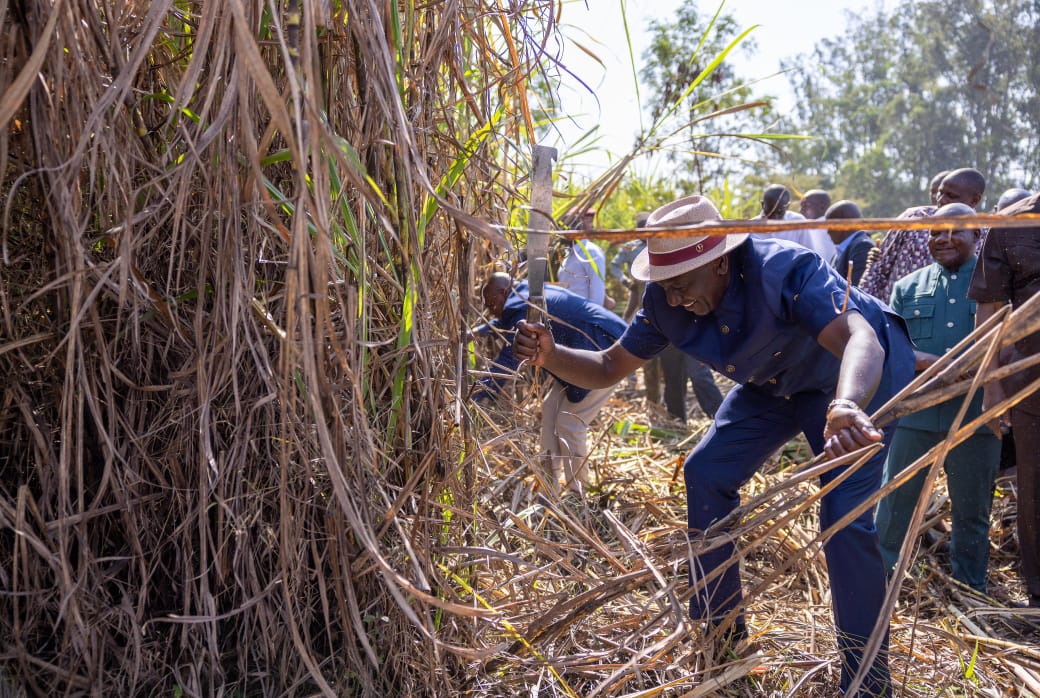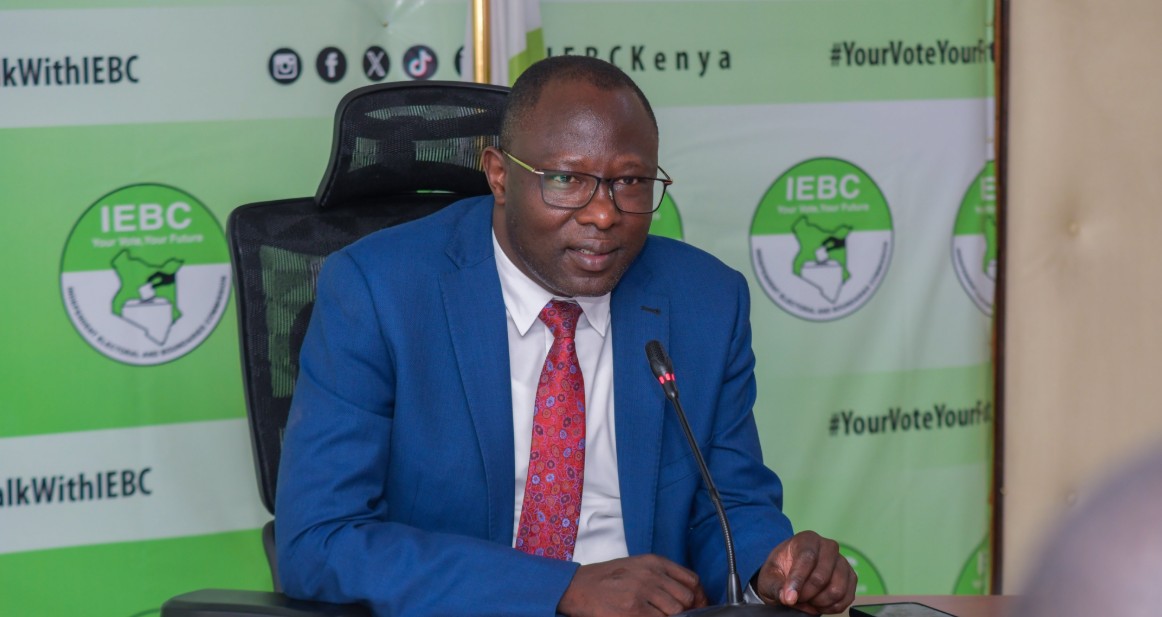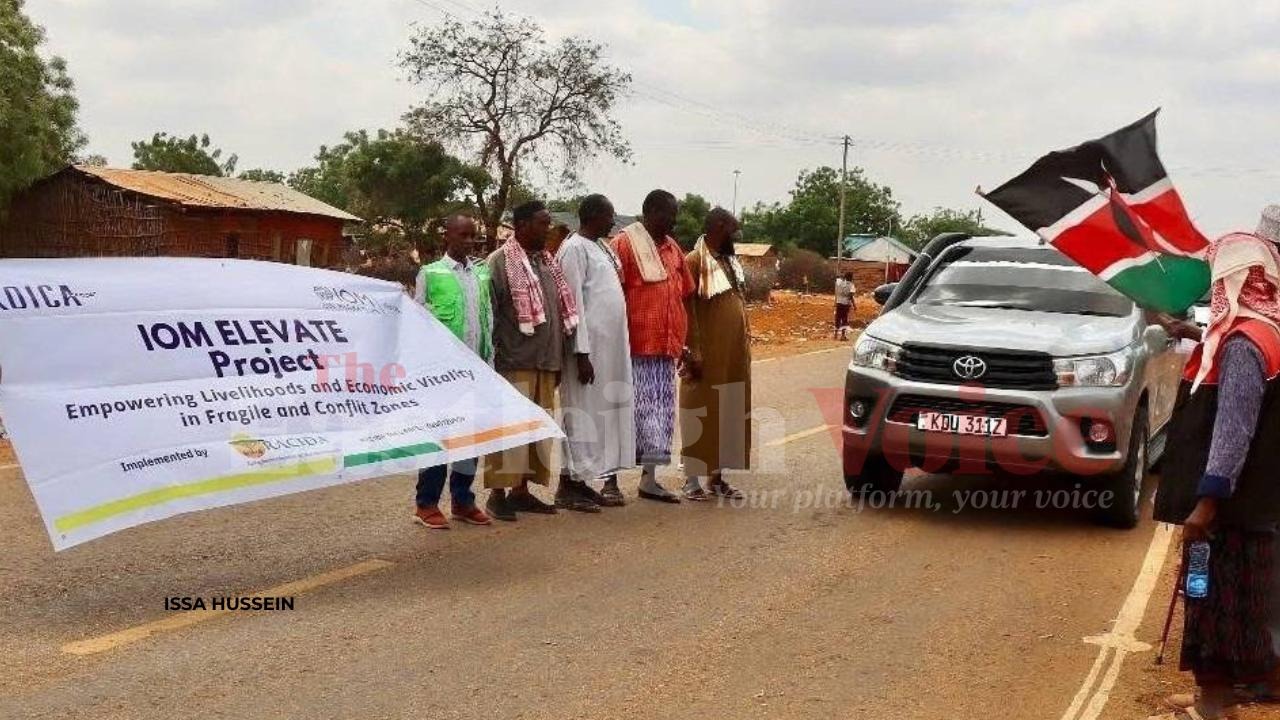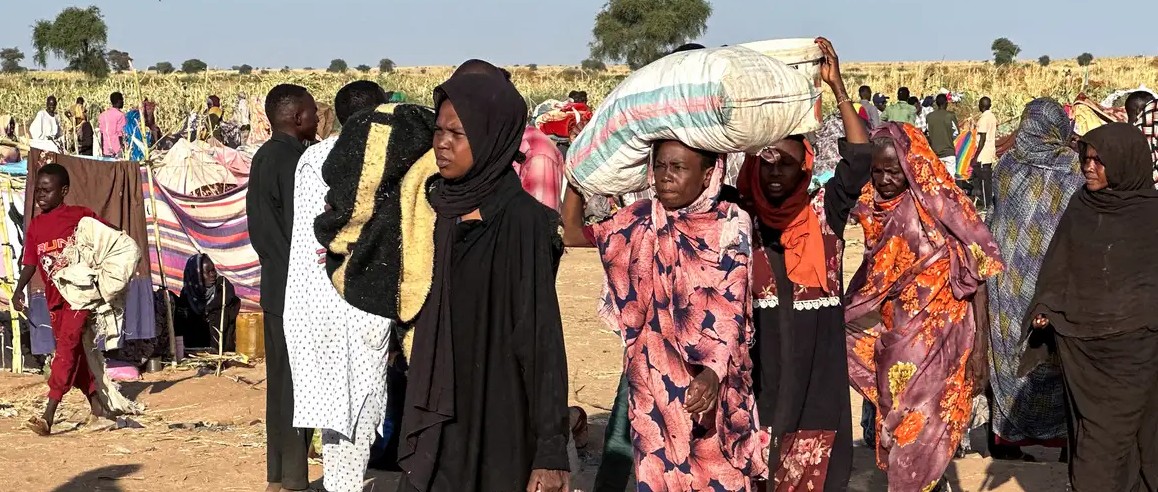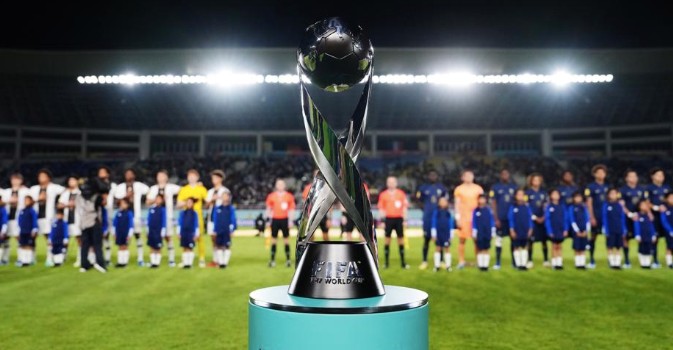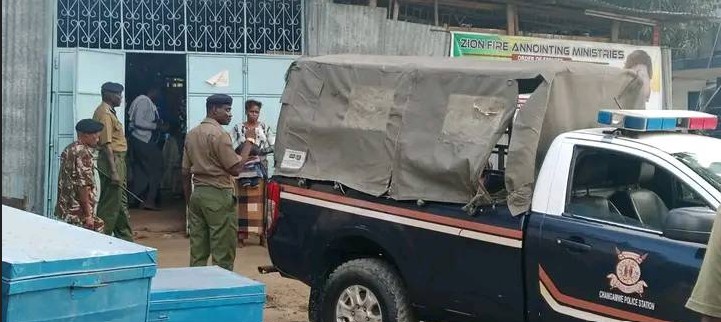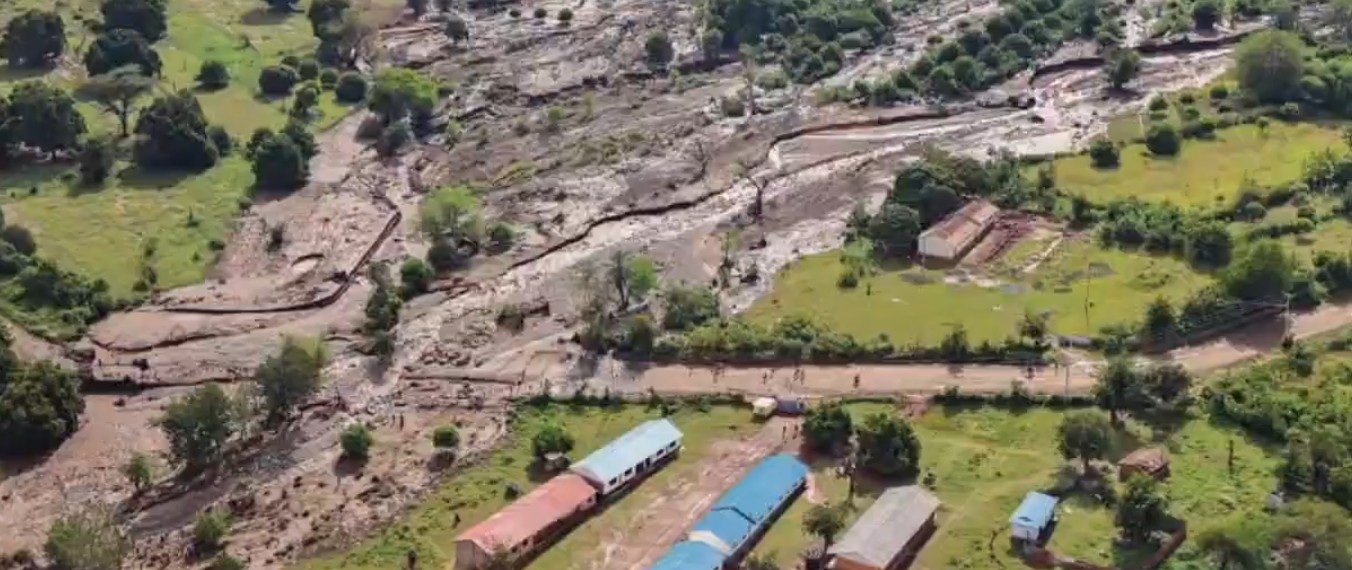Race against the rains: Nairobi and Kiambu counties rush to unclog drainages and stop flooding
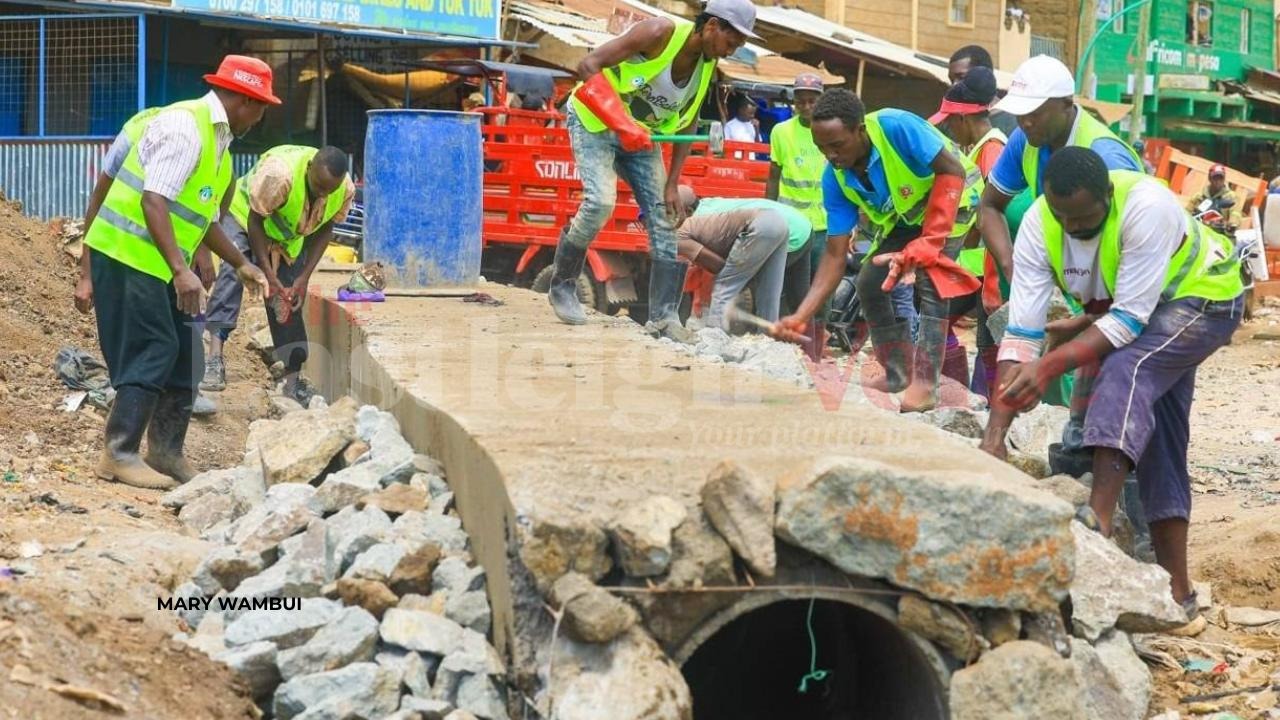
After last year’s devastating floods left families stranded on rooftops, Nairobi and Kiambu are now rushing to clear blocked drainages and expand stormwater systems in a last-ditch effort to keep homes and businesses safe.
Around this time last year, hundreds of residents in Nairobi and Kiambu were stranded on their rooftops after heavy rains flooded their homes, leaving them temporarily homeless.
The flooding, caused by encroachment on waterways and clogged drainage systems, forced many people into camps where they sought shelter and aid until the rains subsided and they could return home.
More To Read
- Trapped by rains: Nairobi’s flood victims face another season of uncertainty
- City flooding woes: Sakaja admits Nairobi's drainage system is overwhelmed
- Ombudsman gives KURA ultimatum to fix Nairobi roads amid residents’ complaints
- Mathare residents urge government to act before floods cause another disaster
- Nairobi's flooding menace exposes overwhelmed colonial-era drainage system
- Brace for intensified rainfall, strong winds on Monday and Tuesday - Met
This year, the same fate could befall more residents if mitigation measures are not implemented effectively—especially in densely populated areas such as Mwiki, Githurai, and Mathare, where flooding has previously displaced families.
Nairobi County has been working to unclog drainage systems in Mathare, Kayole, Juja Road, and other areas. However, the Chief Officer in charge of Environment has blamed residents for dumping waste into the very drainage that has already been cleared.
Githurai and Mwiki
A spot check by The Eastleigh Voice shows that similar drainage efforts are underway in Kiambu, particularly in Githurai and Mwiki—areas that were severely flooded last year, forcing some residents into camps where they relied on aid from well-wishers.
James Macharia, a boda boda rider from Mwiki Ward, said Githurai has long struggled with flooding, especially during heavy rains.
“We are seeing such drainage projects being done now. This place is usually a mess when it rains, specifically here, where it worsens, making our clients unable to reach us due to mud and water concentration on the road. That made them request to be picked from their houses, which to us is not cost-effective because we end up spending much on fuel,” he said.
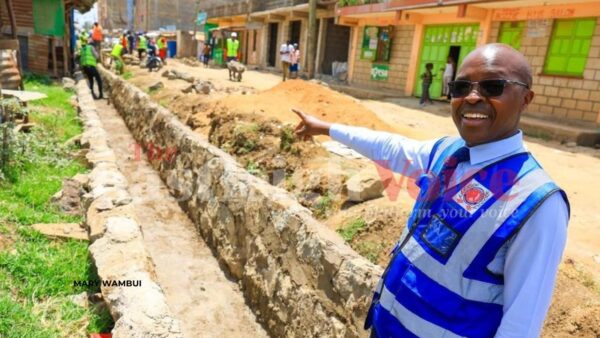 Githurai Municipal Manager Elijah Gitahi Ndung’u inspects ongoing drainage works in Mwiki, part of a Nairobi–Kiambu flood mitigation drive aimed at preventing waterlogging and protecting homes ahead of the rainy season. (Photo: Mary Wambui)
Githurai Municipal Manager Elijah Gitahi Ndung’u inspects ongoing drainage works in Mwiki, part of a Nairobi–Kiambu flood mitigation drive aimed at preventing waterlogging and protecting homes ahead of the rainy season. (Photo: Mary Wambui)
Situation improved noticeably
Macharia added that the situation has improved noticeably in recent days.
“This road connects Mwiki with Githurai. We have seen positive change in the last two days, yet the project is not complete. We anticipate that the project will lead to better business, and the people who are always forced to move from their homes downstream, where there is a river, will, for the first time, remain in their homes. The riverbed has been widened, and the drainage channel now has a proper pathway to drain water into the river, meaning excess water will follow the natural path,” he explained.
Cyrus Nderitu, a long-time Mwiki resident, said the area’s sewer line has always been problematic, particularly when it mixes with rainwater in clogged drainage systems.
“People here have always used buckets to empty clogged drainage to prevent floodwaters from entering their homes. This is due to a long-time lack of clear drainage channels that would allow the flow of water downstream. The cotton soil around here also makes the situation worse as it retains water instead of absorbing it,” he noted.
Stagnant water
Other Topics To Read
- Headlines
- Nairobi floods
- Kiambu drainage
- flood mitigation Kenya
- unclogging drainage Nairobi
- Githurai flooding
- Mwiki flood control
- Nairobi County drainage works
- Kiambu flood prevention
- stormwater management Kenya
- Nairobi heavy rains
- Race against the rains: Nairobi and Kiambu counties rush to unclog drainages and stop flooding
- News
Nderitu added that stagnant water often leads to disease outbreaks, damages household items, and disrupts businesses.
“When the water becomes stagnant, even diseases come up that make kids more vulnerable to. At home, carpets and other delicate items get destroyed, and business is affected because the mud disrupts trade and the flow of both human and vehicle traffic,” he said.
He, however, welcomed the ongoing works to dig up and cement drainage floors to improve water flow.
In Githurai, clothes retailer Pius Wambua said floodwaters used to enter shops and cause losses.
“The flood water would make its way to our shops, affecting business. The ongoing works have helped retain customer flow as clients no longer struggle to jump muddy patches,” he said, adding that, “Bodas would also get stuck, and some people would slide and use alternative routes, thus keeping business on this side down.”
Municipality status
Githurai Municipal Manager Elijah Gitahi Ndung’u said the ongoing drainage works will include digging new channels and installing 120 culverts across Mwiki, Kiuu, Mwihoko, Kahawa Wendani, and Kahawa Sukari. The initiative follows the area’s elevation to municipality status and the allocation of new funds.
“So far, we have done about 10 kilometres of storm drainage system in this area. This water is being directed to the river to prevent flooding when it rains. The impact has been great—there has been no flooding from the recent rains. At the same time, the Ruiru-Juja Water and Sewerage Company is also connecting the area to a sewer system to eliminate the problem of raw sewage mixing with flood water,” he said.
Engineer Stephen Wang’ombe of the Ruiru-Juja Water and Sewerage Company, who leads the Githurai flood mitigation scheme, said stormwater contamination previously posed serious risks to residents.
“Initially, we used to have the challenge of stormwater that is contaminated with grey water getting into our pipeline system before finding its way to the manholes. In consultation with the management and the County Government, we decided to handle the most affected areas in five wards—Githurai, Mwiki, Kiuu, partly Kahawa Wendani and Githurai Kimbo,” he said.
He noted that some drainage systems in Mwiki and Kiuu wards are nearing completion.
“We want to achieve 100 per cent sanitation through proper management of stormwater, by first draining the area followed by the sewerage system, because we cannot achieve 100 per cent sanitation without first draining the surface water emanating from homesteads, which is part of our core mandate,” he added.
The project’s scope includes trench excavation, concrete lining of drainage channels, installation of culverts, placement of cover slabs, and rehabilitation of access roads damaged during construction.
Top Stories Today


